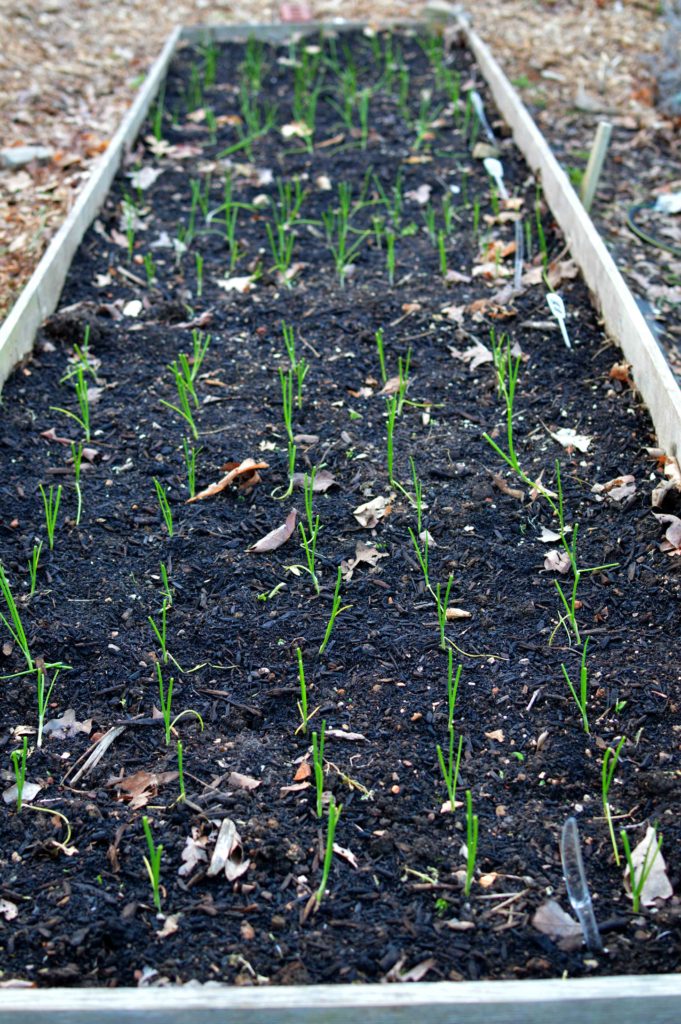Plant spacing is key to a successful and productive vegetable and fruit harvest. You don’t want to have plants too crowded or too spaced out but just right.
Beginners have a tendency to overcrowd plants because it’s hard to realize how big they will get at maturity.


Here’s why you don’t want to overcrowd your plants:
- Overcrowding leads to disease problems because air can’t circulate as well around the plants.
- Overcrowding also leads to lower harvests because plant roots are competing for nutrients.
Spacing your plants too far apart is definitely the lesser of the two evils. If you had to be in error one way or the other, too far apart would be the way to go in my opinion.
Here are some reasons not to space fruits and vegetables too far apart:
- Increased weed pressure because multiple plants together don’t shade out weeds.
- In the case of fruits, the plants often need another variety for pollination to produce fruit. If your plants are spaced beyond the recommended distance apart for planting, cross pollination is much less likely to occur.
The plant spacing below is specifically designed for vegetables in raised beds. I will cover fruit spacing in a blog posts coming up soon.
If you’re looking for row spacing, that is usually found on the back of a seed packet. I’ve dabbled in using rows but I’m going to wait until I have more experience with it to make my recommendations.
Over the last decade or so I’ve made adjustments to my raised bed plant spacing each year and developed my own guide that works great with the varieties I grow and the climate I am in.
I’ve tried to make my spacing as universal as possible. But keep in mind that individual varieties vary in size and you may need to make slight adjustments.

Raised Bed Plant Spacing
Unless otherwise noted, these spacing amounts are for equal spacing in all directions.
Arugula 4 inches
Asparagus 14 inches
Beets 6 inches
Broccoli 18 inches
Brussel Sprouts 18 inches
Bush beans 8 inches
Cabbages 18 inches for smaller types, 2 feet for large
Carrot 3-4 inches
Celery 10 inches
Collards 12 inches
Cauliflower 18-24 inches
Corn 12 inch spacing (plant this in a block for adequate pollination)
Cucumbers 6 inches then thin to 1 foot apart along trellis (one row)
Eggplant 24 inches
Garlic 6 inches
Kale 12-18 inches depending on type
Leeks 8 inches
Lettuce 10 inches
Okra 18 inches
Onion 6-8 inches between plants
Parsnip 6 inches
Peas 3 inches (assuming planting along a trellis in single row)
Peppers 18 inches
Pole Beans 4 inches, 1 row
Potatoes 12 inches. You still want about 18inches to 2 feet between rows so you have enough dirt to pile on the plants as they grow.
Radishes 4 -8 inches depending on type.
Sweet Potatoes 12 inches but not in all directions. I usually allow 18 inches in between rows.
Tomatoes 24-36 inches
Turnips 4-8 inches depending on type
Winter Squash and Pumpkins Spacing is very dependent on variety. However, I usually allow 9 feet+ in all directions for these plants. They aren’t the best for raised beds because they sprawl all over the place and most raised beds aren’t larger than four feet wide.
Zucchini and Summer Squash 4 feet
A printable version of this guide can be found on my email subscriber resource page. It’s packed with other printables and guides. I keep adding to the page I go along blogging.
You can subscribe to get my emails by clicking HERE. If you’re already subscribed, the link and password to the page can be found at the end of any of the emails I’ve sent. 🙂


2 comments
i am beginning to plant vegetables, herbs and some flowers in 2 raised 8 x4 beds, We live in Eastern NC. This is our first time planting in a raised garden. Any suggestions would be welcomed
That’s great! Just make sure stubborn grasses and perennial weeds are dead before getting started! It’s a hassle to deal with them later.